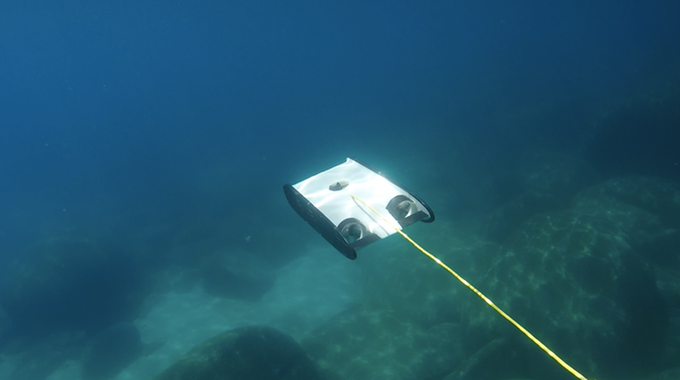
Our planet is an ocean, and it is almost entirely unexplored. OpenROV, and their new Trident underwater drone is one of many tools that will help change that by democratizing exploration, conservation, and ocean science. We are poised atop the crest of a wave that may change how humans interact with the ocean as profoundly as the invention of the aqualung.
Earth is not the only body in our solar system that hosts an ocean. As we (slowly) venture out into the stars, could OpenROV Trident dive in extraterrestrial seas?
First some caveats: Trident in its current form would probably not endure the stress of space travel. It is built for Earth oceans. Space is cold, and with the exception of the rocky bodies closer than one Astronomical Unit (AU, the average distance between our sun and Earth) to the sun, most celestial bodies are cold. Mars averages -60°C. Trident’s current battery configuration is not built for that kind of deep freeze. In addition, all known extraterrestrial oceans lie beneath dense ice sheets. We would first have to punch a hole in the ice. Fortunately, Trident is small, but to dive these oceans, Trident would need to contend with significant mass overhead.
Here’s the thing: we’re really good at sending robots into space. The challenges of sending a 3-kilogram payload out into the solar system is well-within our current technology. So the question for Trident is not “can it survive space?” but rather, what does an interplanetary underwater robot need to endure that current conventional spacecraft do not. The answer, of course, is pressure:
Trident, in it’s current form, can dive to depths of 100 meters, or roughly 10.7 Earth Equivalent Atmospheres (EEA). Assuming that the issues of power, operating in extreme cold, operating in a vacuum, withstanding radiation, and actually getting to another world are challenges that can be overcome with our existing technology, the question becomes: Where are the extraterrestrial oceans and how much pressure would this tiny robot encounter as it explored an alien sea?
Note: for these calculations, and unless otherwise stated, I’m treating the density of water and ice as uniform. These are ballpark estimates and should be taken with a grain of salt. In all cases, I’ve assumed that the atmosphere is negligible. This article is intended purely for entertainment and should not be used as the sole basis for an extra-planetary research endeavor.
Europa
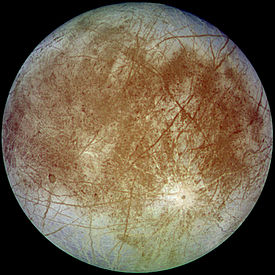
Long the dream of scientists and science fiction authors alike, Europa, one of Jupiter’s many moons, holds the best chance of possessing a massive, planet-spanning ocean. Coupled with geologic activity, Europa might just be out best bet for complex life in the solar system. There’s just one problem: it’s all trapped beneath a massive shell of ice.
There are currently two competing models for Europa’s ocean. In the thick-ice model, the subsurface ocean is trapped beneath 10 to 30 kilometers of granite-hard ice and never interacts with the surface. In the thin-ice model, tidal forces from Jupiter create a more elastic surface, with ice layers in some regions approaching a thickness of just 200 meters, with occasional interactions between the subeuropean ocean and the surface.
With a surface gravity of 1.32 m/s2, a person would feel pretty light on Europa, and that’s going to have some interesting buoyancy ramifications for any submersible (true for every planet we’re looking at), but can Trident handle the pressure? Under the thick ice-model, Trident would be crushed by the pressure of ice overhead, a whopping 120 EEA, but in the thinnest of thin ice models, Trident would experience barely 2.4 EEA, giving the little robot a sizable vertical range to explore. Trident could dive another 640 meters thanks to Europa’s relatively weak gravity.
Enceladus
The sixth moon of Saturn is, like Trident, small but mighty. Although smaller than some asteroid belt object, Enceladus almost certainly has a (relatively) warm, liquid ocean beneath an icy shell. The tidal forces of Saturn even create hydrothermal activity, with plumes of freshwater blasting out into orbit. Water spewed into space from Enceladus forms one of Saturn’s rings.
Enceladus has a hefty 30 kilometer thick ice shell, but at a surface gravity of just 0.11 m/s2 that only translates to 31 EEA at the ice/water interface. It’s a bit outside of Trident’s current maximum depth range, but not by much. A heavily modified OpenROV 2.7 made it to 281 meters, or 28.8 EEA, so perhaps with a little bit of creativity, and a hell of a drill to punch through that icy crust, we could lower Trident into the Enceladean abyss.
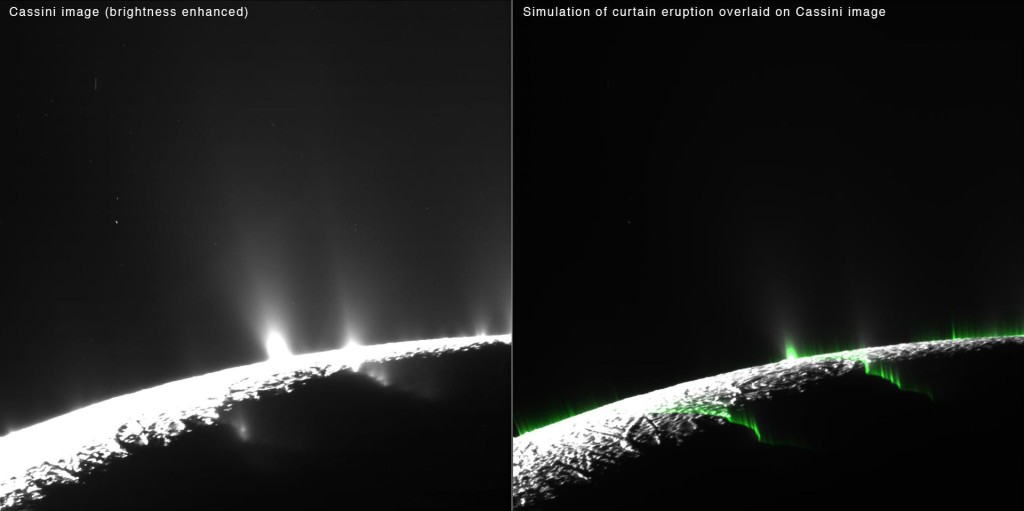
Enceladus’s ocean is strongly alkaline, a result of possible serpentinization. On Earth, serpentanization is one of three known geochemical process that create hydrothermal vents and provides an intriguing possibility for life. Somebody better tell Darcy Paulin he needs to make his legendarily deep-diving OpenROV go just a little bit deeper.
Ganymede and Callisto
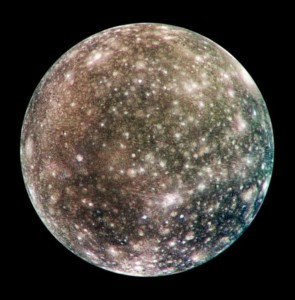
Ganymede is another Jovian moon with a high potential for hosting a subganymedian ocean below a dense ice crust. Unfortunately, that crust is 200 kilometers thick and, with a surface gravity of 1.25 m/s2, will present any ROV with 2600 EEA of pressure. Callisto, like Ganymede, is a big maybe for oceans or even just liquid water. If it does have a subsurface ocean, it is locked under 80 kilometers of ice pushing down with 900 EEA.
Next.
Ceres
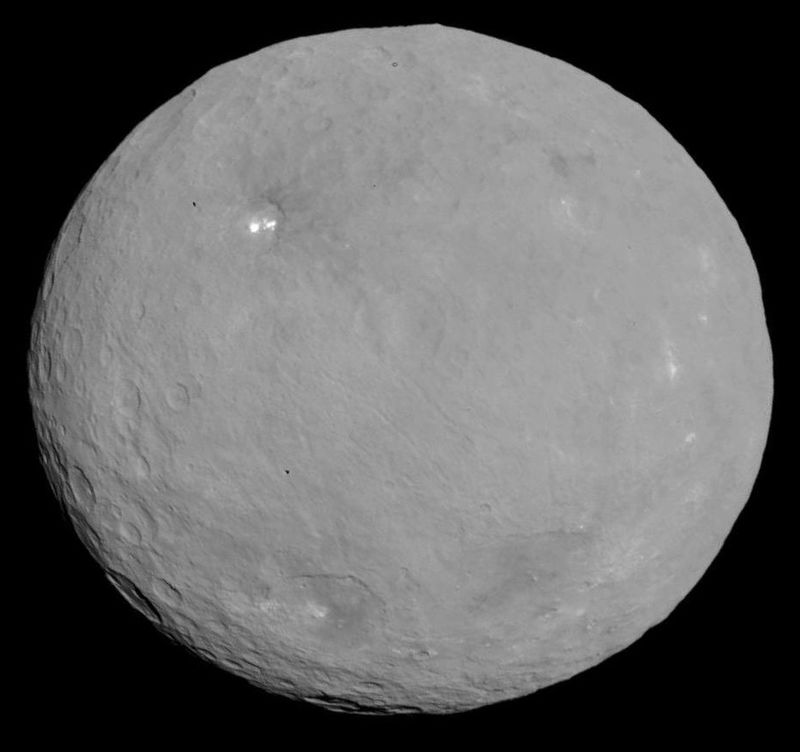
While not technically a planet, Ceres is still intriguing. The largest asteroid belt objects, it is the closest potentially ocean-hosting world to our own. Hypothesized to contain more freshwater than all of Earth, it is as of yet unknown in what state that water resides. If there is a subsurface ocean, it lies beneath a dense crust, though how thick is unclear. If we assumed a relatively hefty kilometer thick shell (huge for a world with a radius less than 500 meters) and that there is a liquid ocean underneath, our little Trident would launch into 6 EEA, comfortably within its operational limits. Trident could dive down another 1700 meters before it would implode from the pressure.
Titan
Titan is the wildest of wild cards. It has a dense atmosphere. It is the only world on this list that has stable liquid on its surface. It has seas, lakes, rivers with tributaries. It is a wet world. There’s just one problem: it’s all liquid methane.
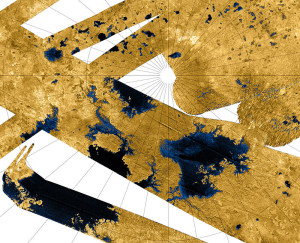
Trident is designed to be hydrodynamic in liquid water and liquid methane is about half that density. Fortunately, Titan only has about 1/7 Earth’s surface gravity, so Trident wouldn’t sink like a stone, but it would be far from the agile swimmer we see in Earth’s oceans. There’s only one way to find out how the tiny little ROV will fair on such an alien world: let’s go dive Kraken Mare!
Ok, well, I guess we could also figure it out with better math, but where’s the fun in that?
Of all the celestial bodies in our solar system, 6 may potentially host major oceans. Two are exceptionally good candidates to send underwater robots. Two will probably crush Trident like a tin can in a trash baler. One is a super huge “if” and the last is just so weird.
In reality, an extraterrestrial ROV will be a profoundly different beast than the current Trident. We design for the world we live in and Trident is the perfect machine for exploring you local oceans, coasts, rivers, estuaries, lakes, caves, and aquifers. But the technology to send a submersible into space exists, today. Our journey into the universe is limited only by our will to explore.